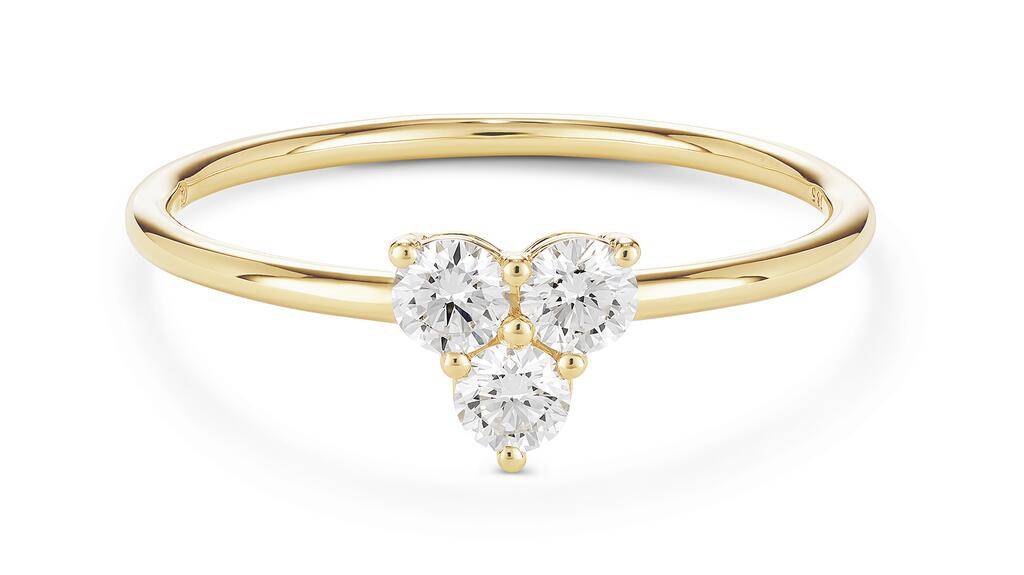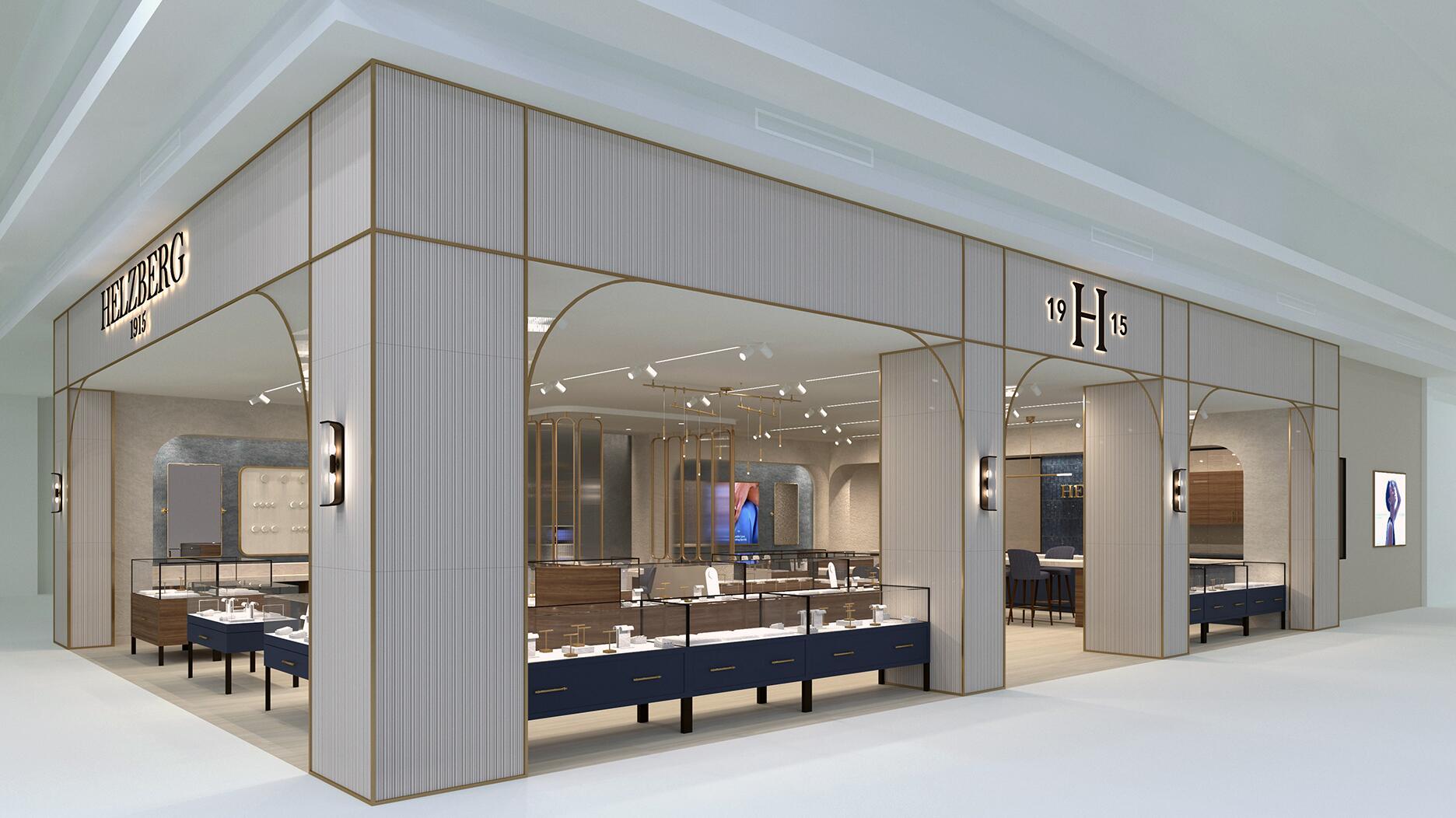Lightbox Is Now Selling Engagement Rings, and Nobody Should Be Surprised
The clues have been there since at least 2021, like a little trail of diamond shavings sprinkled through the virtual woods.

In an opinion piece published in July 2018, shortly after Lightbox was introduced as fashion jewelry for slightly less-special special occasions, longtime industry analyst Ben Janowski wrote: “It seems very unlikely that De Beers would be taking this direction, plunging into a product that has been attacked by many diamond people, just to pursue this very limited range of fashion jewelry.”
He continued, “Spending about $100 million to build a new factory in Oregon could not be justified to sell ‘moments’ jewelry. Nobody can reasonably think that is its short- or long-term objective ... To believe that De Beers will not expand the range of this line to include rings and more expensive products is foolish.”
Five years, a $94 million factory and one global pandemic later, Janowski’s prediction has come to pass, sort of.
Last week, a colleague alerted me to the fact that Lightbox was now selling engagement rings, per the homepage of the company’s website but with no formal announcement preceding the launch.
Lightbox is framing the move as just a test that is only being advertised to consumers in three key markets, Atlanta, Dallas and New York (though anyone in any U.S. state can buy a Lightbox engagement ring from the company’s website).
The test is set to last three months, with the rings sold only on the Lightbox website, the company said.
As of press time, there were 16 diamond engagement rings available on the site retailing for $500 to $5,000.
Rings set with regular Lightbox lab-grown diamonds are priced at the brand’s standard $800 per carat, plus $700 for the 14-karat gold setting. Rings with a halo setting are an additional $300.
There also are a few 18-karat gold rings set with “Finest” lab-grown diamonds, the name Lightbox has given to its more expensive, higher clarity (VVS) and color (D, E or F) diamonds.
The company said it is maintaining its $1,500/carat pricing for Finest stones but has, “not held to a fixed setting price for this test,” adding that it is, “using this period to better understand consumer reaction to different propositions.”

After I heard the news of Lightbox’s light launch of engagement rings, I reached out to Janowski, who was impressed I had remembered his article from 2018 and unsurprised that Lightbox is selling, or at least testing the sale of, engagement rings.
When De Beers launched Lightbox, “I think they were concerned about panicking sightholders,” he said, hence the “fun fashion” introduction.
But, he suspected, the long-range plan was to slowly build up to engagement rings because its other business—mining—isn’t forever.
Currently, De Beers has mines in Botswana, Namibia, South Africa and Canada, with the lion’s share of production (70 percent, according to its year-end 2022 production report) coming out of Botswana.
There are three active diamond mines in Botswana—Jwaneng, Orapa and Letlhakane—with their life expectancy ranging from 13 (Jwaneng, 2036) to 20 years (Letlhakane, 2043), barring the approval of any projects that could extend life-of-mine for these operations.
(There is a fourth diamond mine in Botswana, Damtshaa, but there’s no mining taking place there at the moment.)
De Beers’ current mining operation with the longest expected lifespan is Mining Area 1 in Namibia, which it anticipates will remain active for at least 19 more years, until 2042. Namibia as whole accounted for 6 percent of De Beers’ overall production last year.
There are no more major mines coming online anytime in the near future and any new mines that do open will have their own unique set of challenges—host countries that, rightfully, will want more of a cut of their country’s natural resources and increasingly unpredictable severe weather caused by climate change.
“De Beers never thinks short term, or they try not to,” Janowski said Wednesday. “They see that they’ve got a volatile market, a key country partner in Botswana that’s basically going to be taking over what’s left of the diamond business there.”
“Their mining days are literally fading away. So, what are they doing to do? What is their business going to be?”
The company needs to diversify, which is what it tried to do with diamond buybacks, and what it is doing with De Beers-branded stores and high jewelry collections, and Lightbox.
And if you’re going to be in the business of growing diamonds and you have an efficient operation and are building, or at least attempting to build, a brand that consumers recognize, why would you not sell engagement rings?
“I don’t think you can avoid it,” Janowski said. “If you are going to be in that business, why restrict yourself?”
Like Janowski, I wasn’t surprised when a colleague texted me about Lightbox’s new engagement rings last week, though it was the company’s little moves that were the big tell for me.
As you might remember, when Lightbox started out, it was a lot of smaller (less than 1 carat) blue and pink diamonds in more fashion-forward settings. (I have an early Lightbox ring set with a fancy shape pink diamond; I still wear it regularly to this day and I get a lot of compliments on it.)
Over time, the company’s production has gotten bigger, better and more targeted.
In August 2021, the factory started pumping out 2-carat lab-grown diamonds. That fall, it began selling loose lab-grown diamonds.
In September 2022, Lightbox expanded its selection of loose diamonds to include more fancy shapes, which are hot right now.
When Lightbox first began selling lab-grown loose round and princess-cut diamonds in fall 2021, it seemed the company was working overtime to distance the stones from engagement rings, essentially describing them as destined for custom pieces of fashion jewelry commissioned by female self-purchasers.
In a quote provided by the company, then-CEO Steve Coe used a lot of adjectives to describe Lightbox Loose without really saying anything, describing them as a “simple and accessible way to create fun and affordable, custom-designed lab-grown diamond fashion jewelry using our colorful array of stones.”
Though the phrase “engagement ring” was not among the many words that passed Coe’s lips, I wrote in December 2021 after a trip out West to see the finished Lightbox facility that these loose diamonds, “seemed destined for engagement rings.”
And now that’s right where they are, for a three-month “test run,” at least.
The Latest

The couple pleaded guilty to concealing at least $127 million in cash transactions at its precious metals businesses.

Consumers shared concerns about prices, inflation, tariffs, trade, and politics in the survey’s write-in response section.

In February 2026, the auction house will move its headquarters to the former Steinway Hall, a neoclassical landmark on Billionaires’ Row.

How Jewelers of America’s 20 Under 40 are leading to ensure a brighter future for the jewelry industry.

The new show will take place Jan. 23-25, 2026.


The former BHP Billiton leader and Gemfields chairman is remembered for his influential leadership throughout his 50-year mining career.

The LVMH-owned brand has partnered with the costume design union to revamp its award for 2026.

Roseco’s 704-page catalog showcases new lab-grown diamonds, findings, tools & more—available in print or interactive digital editions.

The luxury titan inked a deal to acquire an initial minority stake in the jewelry manufacturer with a pathway to full ownership by 2032.

The company’s curation of unsigned vintage and estate jewelry debuted at the Bloomingdale’s in Costa Mesa, California.

In the recent multi-shipment seizure, CBP also found counterfeit Audemars Piguet, Moncler, and Chrome Hearts items.

Jewelers of America execs and National Jeweler editors discuss tariffs, the sky-high gold price, and the engagement that broke the internet.

The luxury goods company said founder Ippolita Rostagno will remain at the brand’s helm.

Laura Burdese, who joined the Italian luxury brand in 2022, will take on the role in July.

Need a gift for the cat lover who has everything? Look no further than our latest Piece of the Week.

It purchased the “Grosse Pièce,” an ultra-complicated Audemars Piguet pocket watch from the ‘20s, for a record-breaking price at Sotheby’s.

The lab-grown diamond grower now offers custom engagement and fashion jewelry through its Kira Custom Lab Jewelry service.

Chandler got his start at Michelson Jewelers and has served as DCA president and CEO since 2001. He will retire at the end of the month.

The boutique is slated to open this week inside Terminal 8, offering pre-owned Rolex watches and more to international travelers.

Sponsored by Digital Monitoring Products

The special-edition egg pendant ingested in a New Zealand jewelry store was recovered after a six-day wait.

Associate Editor Natalie Francisco plays favorites with Piece of the Week, selecting a standout piece of jewelry from each month of 2025.

The “Love and Desire” campaign is inspired by the magic that follows when one’s heart leads the way, said the brand.

Two awardees will receive free tuition for an educational course at the Swiss lab, with flights and lodging included.

Berta de Pablos-Barbier will replace Alexander Lacik at the start of January, two months earlier than expected.

Sotheby’s held its first two jewelry sales at the Breuer building last week, and they totaled nearly $44 million.

Winners will receive free registration and lodging for its fourth annual event in Detroit.




























